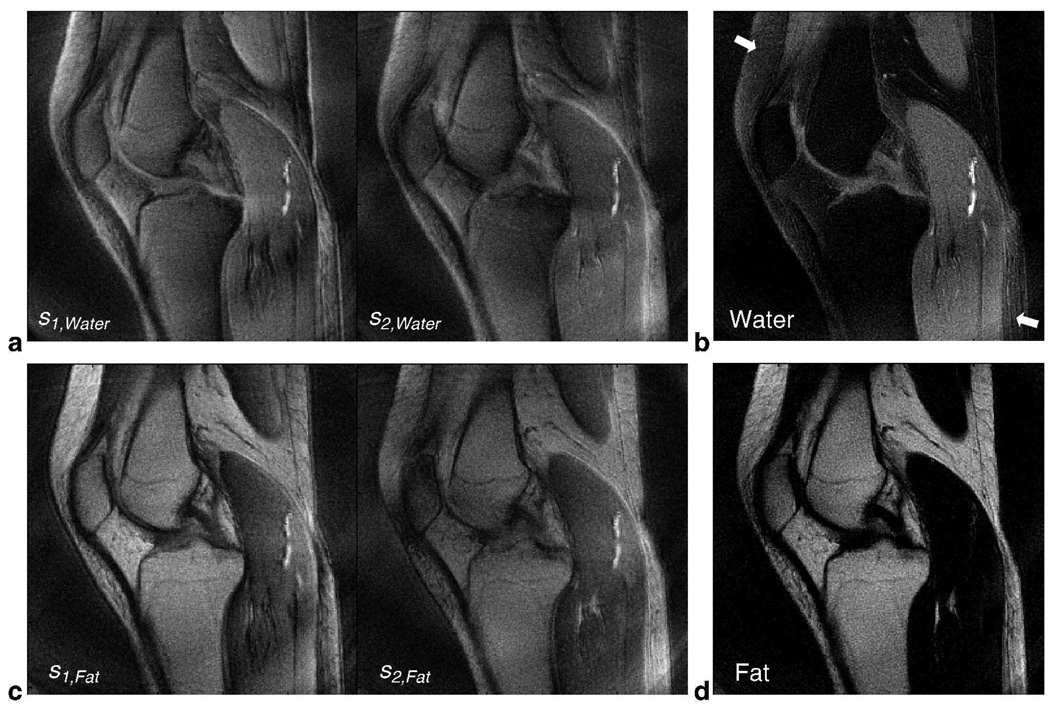FIG. 5.
In Vivo Knee Results using 2-Point Dixon Reconstruction for 2-Revolution Dataset. The datasets Set1 and Set2 of retraced inner rings are reconstructed at water frequency (see text for imaging parameters) to form the source images s1,Water and s2,Water (a). Higher-resolution outer rings (single-revolution) were demodulated at water frequency and added to each source image as common information. Similarly, the acquired data was reconstructed at fat resonance frequency to form source images s1,Fat and s2,Fat (c). The source images in (a) and (c) were then used to calculate a water image (b) and a fat image (d), respectively. In general, good suppression of fat signal is achieved for the water image, but there is still some residual fat signal due to field inhomogeneity (arrows). The water and fat images have the same windowing level.

